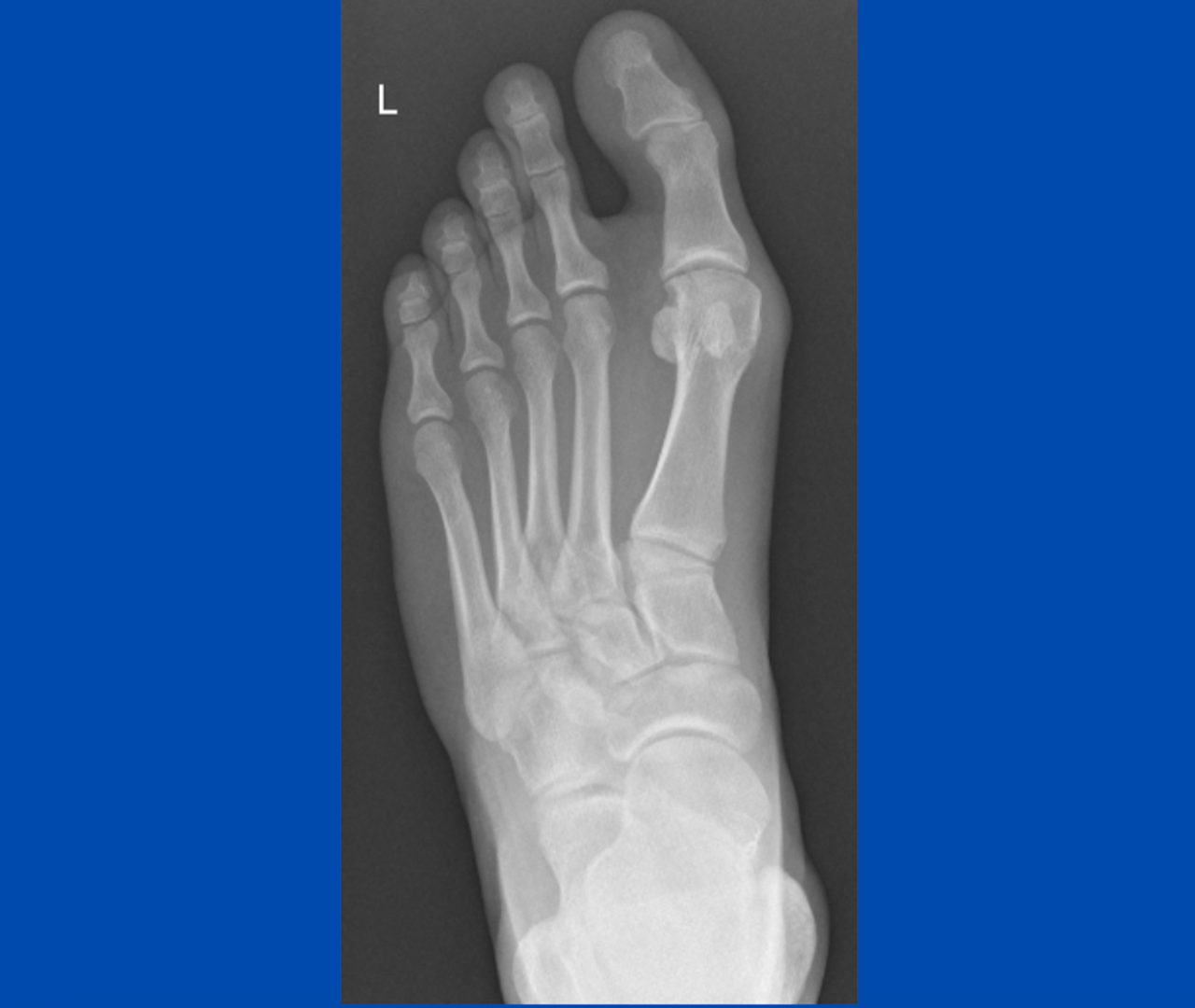
Complications can occur with all surgery, some more serious than others. Deep vein thrombosis (DVT) / venous thromboembolism (VTE) is something that all podiatric surgeons must be aware of when doing any surgery. A risk profile is done for every patient who has surgery carried out by my team. If there are known risk factors for DVT/VTE, I conduct a diligent assessment and a risk assessment is done. This allows us to prepare for surgery and reduce the patient’s risk of developing these conditions. A significant risk factor is a previous DVT/VTE.
The patient whose imaging can be seen on this page is only in his 30s, yet he has a very symptomatic foot. Although still young, he has a history of DVT that developed into pulmonary embolism (PE) – a severe condition that needs urgent attention.
The patient finds the joint pain is now impacting his work and his ability to do sporting activities and is keen to move to surgery.
I have discussed the history of previous DVT and PE, and informed him I will carry out various preventative measures, including short surgery time, avoiding using a calf tourniquet, no cast, no hospitalisation in a ward, early mobilisation, compressive stockings. Additionally, he will need to take prophylactic anticoagulant medication. All this gives me great confidence that we can avoid another DVT.
He must be aware that we are taking these actions, but he has also been informed that he may still develop DVT even with these preventative measures. This will allow him to consider his options and weigh the pros and cons, potential risks and benefits to make an informed decision.
If you have any specific questions or would like to discuss similar cases, feel free to contact me.
(This content is intended for healthcare professionals only)
